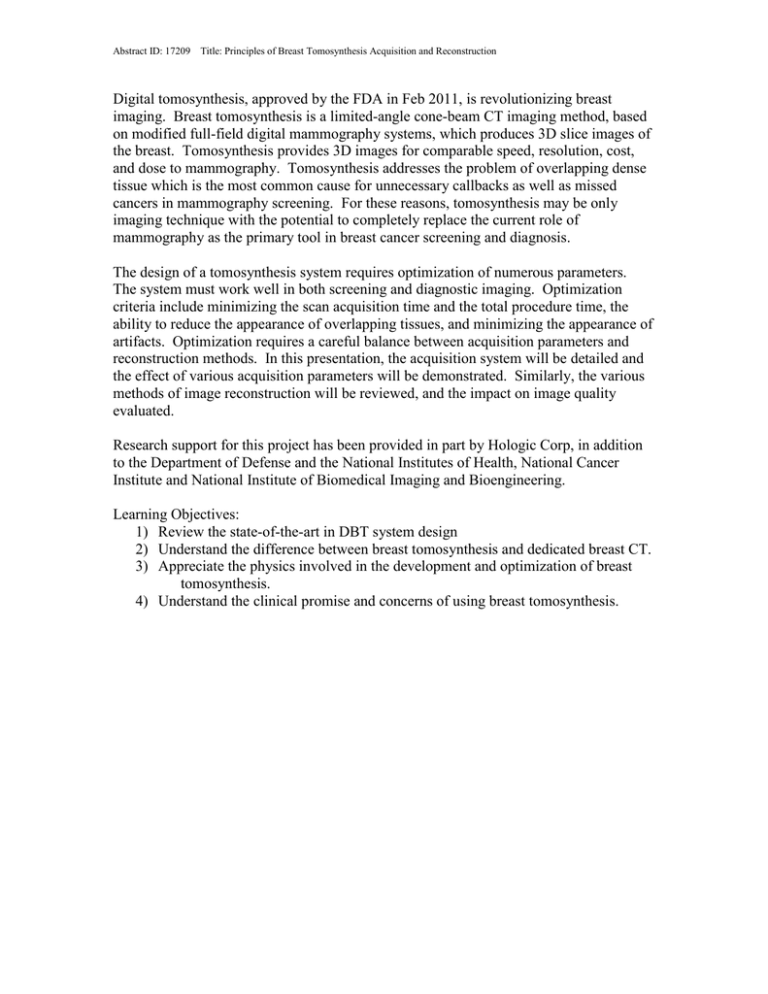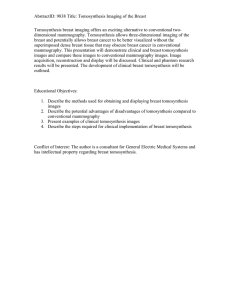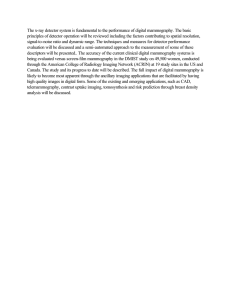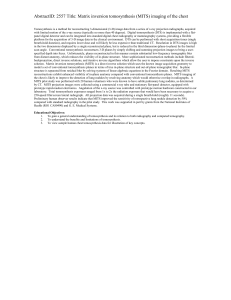Digital tomosynthesis, approved by the FDA in Feb 2011, is... imaging. Breast tomosynthesis is a limited-angle cone-beam CT imaging...
advertisement

Abstract ID: 17209 Title: Principles of Breast Tomosynthesis Acquisition and Reconstruction Digital tomosynthesis, approved by the FDA in Feb 2011, is revolutionizing breast imaging. Breast tomosynthesis is a limited-angle cone-beam CT imaging method, based on modified full-field digital mammography systems, which produces 3D slice images of the breast. Tomosynthesis provides 3D images for comparable speed, resolution, cost, and dose to mammography. Tomosynthesis addresses the problem of overlapping dense tissue which is the most common cause for unnecessary callbacks as well as missed cancers in mammography screening. For these reasons, tomosynthesis may be only imaging technique with the potential to completely replace the current role of mammography as the primary tool in breast cancer screening and diagnosis. The design of a tomosynthesis system requires optimization of numerous parameters. The system must work well in both screening and diagnostic imaging. Optimization criteria include minimizing the scan acquisition time and the total procedure time, the ability to reduce the appearance of overlapping tissues, and minimizing the appearance of artifacts. Optimization requires a careful balance between acquisition parameters and reconstruction methods. In this presentation, the acquisition system will be detailed and the effect of various acquisition parameters will be demonstrated. Similarly, the various methods of image reconstruction will be reviewed, and the impact on image quality evaluated. Research support for this project has been provided in part by Hologic Corp, in addition to the Department of Defense and the National Institutes of Health, National Cancer Institute and National Institute of Biomedical Imaging and Bioengineering. Learning Objectives: 1) Review the state-of-the-art in DBT system design 2) Understand the difference between breast tomosynthesis and dedicated breast CT. 3) Appreciate the physics involved in the development and optimization of breast tomosynthesis. 4) Understand the clinical promise and concerns of using breast tomosynthesis.



